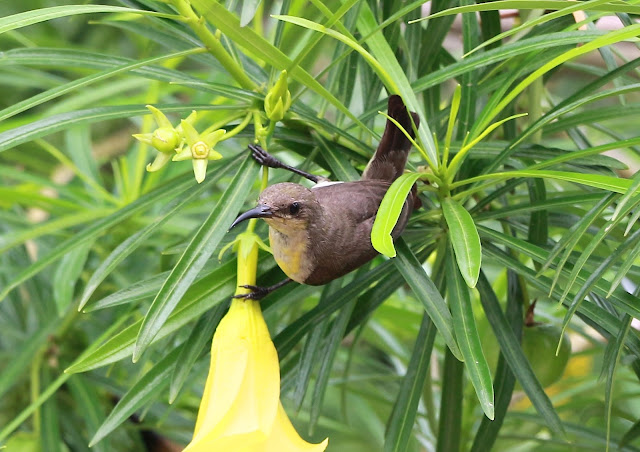The Purple sunbird (female)

Sunbirds are very tiny birds that are extremely swift. If you dont pay attention, they may almost pass off as a butterfly! The female sunbird is olive colored with yellowish underparts. The bill is downcurved almost like a hook. The mainly feed on nectar. The yellow oleander tree in my lawn attracts many sunbirds (as seen below).









